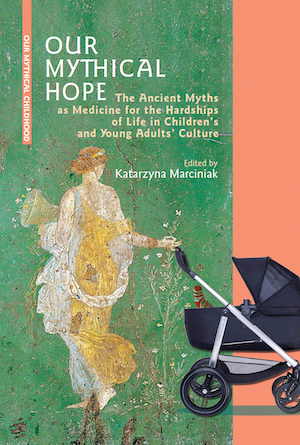Myth and Suffering in Modern Culture
Myth and Suffering in Modern Culture
The Discursive Role of Myth from Oscar Wilde to Woodkid
Author(s): Katarzyna Jerzak
Subject(s): Pre-WW I & WW I (1900 -1919), Interwar Period (1920 - 1939), WW II and following years (1940 - 1949), Post-War period (1950 - 1989), Transformation Period (1990 - 2010)
Published by: Wydawnictwa Uniwersytetu Warszawskiego
Keywords: mythology; modern literature; children's culture; young adults' culture; Oscar Wilde; Antoine de Saint-Exupéry; mythical chronotope; friendship; adolescence; resilience; suffering; Woodkid; Ubisoft
Summary/Abstract: Using Cassirer’s fundamental ideas on mythical thinking developed in his "Philosophy of Symbolic Forms" (1923–1929), I analyze the persistence of myth in modern literature for children and youth. I focus first on two canonical authors, Oscar Wilde ("The House of Pomegranates") and Antoine de Saint-Exupéry ("The Little Prince"), and demonstrate how they both formulate a mythical chronotope that allows for a combining of the two traditional literary forms, the myth and the fairy tale, into a seamless new authorial genre in which great importance is attached to a particular spatiotemporal setting. The issues of overcoming suffering, loss, and death are at the core of the two authors’ oeuvre. I then turn to the contemporary expression of the mythical chronotope. I analyze the direct and somewhat reductive renderings of the ancient Greek myths in Katherine Marsh’s "The Night Tourist" (2010) and "The Twilight Prisoner" (2014), which make overt use of, respectively, the story of Eurydice and the myth of Demeter and Persephone, but stage them both in twenty-first-century New York City and its Underworld. Space is crucial in these texts and combined with an uncanny warping of time, points to a mythical chronotope. In psychological terms, the original novel and its sequel deal with loss and mourning as well as with the role of friendship in adolescence. Last but not least, I analyze the video clips and the lyrics of the French artist Woodkid’s album, "The Golden Age" (2013). The music and the imagery were used by Ubisoft in their video game series "Assassin’s Creed", thus reaching millions of young people and children. I demonstrate how the ostensibly ultra-modern medium employs the mythical chronotope and mythical thinking in the depiction and overcoming of violence, trauma, and addiction. Mythical thinking, it seems, persists up to our era and the mythical chronotope lends itself to the depiction of suffering, grief, and, occasionally, resilience that accompany liminal rites of passage from childhood into adulthood.
Book: Our Mythical Hope
- Page Range: 131-143
- Page Count: 13
- Publication Year: 2021
- Language: English
- Content File-PDF

